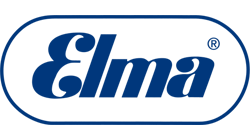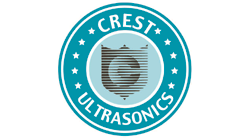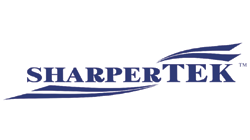Ultrasonic Cleaning Solution Selection Tips
|
Let Us Help We can help you
find the perfect storage unit for your needs and budget. |
An ultrasonic cleaning solution, also called a soap, detergent or chemistry, can make the difference between an "OK" and a "perfect" cleaning job. This post offers ultrasonic cleaning solution selection tips based on what you are cleaning and the contaminants being removed.
But first a tutorial:
Types of Ultrasonic Cleaner Solutions
In general, ultrasonic cleaner chemistries can be broadly classified two ways:
As Emulsifying or Demulsifying
Emulsifying chemistry keeps oils in suspension.
Demulsifying chemistries allow oils to float to the surface.
In both cases, solid contaminants fall to the bottom of the cleaning tank.
By pH
The pH designation helps classify the formula as acidic, alkaline or neutral with higher pH values associated with alkaline and lower as acidic.
When emulsifying formulas are used, contaminants accumulate and begin to lower cleaning effectiveness. They also adhere to the product when it is removed from the cleaning tank, possibly necessitating a rinsing operation. Emulsifying formulations are typically used for low-volume cleaning operations.
Demulsifying formulas allow oily contaminants to float to the surface where they can be skimmed off and set aside for later disposal. These formulas are typically used in high-volume cleaning operations where oil is a principal contaminant.
Industrial ultrasonic cleaners can be equipped with weirs and sprays to direct contaminants to a collection container, and filters to collect solid contaminants via a pumping system.
Our post extending cleaning solution performance provides helpful information.
Protect your ultrasonic cleaner tank with an acid-resistant plastic insert if a strongly acidic solution is used. The stainless steel tank itself should be partially filled with tap water and a surfactant. The plastic insert is filled with the acidic solution and positioned in the tank. Sonic energy penetrates the plastic and acts on parts immersed in the acidic solution.
Ultrasonic Cleaning Solution Applications
Alkaline Ultrasonic Cleaning Formulas
Carburetors, fuel injectors, engine parts, newly machined parts, and similar components:
Use demulsifying Elma tec clean A4 to remove contaminants such as smoke, heavy grease, soot, wax, coolant oils, loose metal particles, and dust.
Glass, optical assemblies, ceramic substrates and electronics:
Use emulsifying Elma tec clean A1 to remove soldering flux, oil, dust, water damage, coffee, tea, soft drinks, milk, and fingerprints.
Ferrous metals and non-ferrous brass, copper, bronze, precious metals:
Remove oil, fat, grease, sweat, oxides, polishing compounds and similar contaminants with ammonia-containing, emulsifying Elma tec A2. It is especially useful for brightening brass and copper.
Acidic Ultrasonic Cleaning Formulas
Nonferrous heavy metals, stainless steel, aluminum, light metals, brass, steel, plastics and glass:
Emulsifying Elma tec clean S1 removes oxide films, rust, lime, grease, oil, corrosion, and mineral deposits.
Stronger acidic solutions are available for these materials along with steel, iron, gray cast iron, hard alloys, nickel, nonferrous heavy metals and precious metals. We suggest using elma-KS for temporary corrosion protection for steel and iron during cleaning and rinsing cycles.
Neutral Ultrasonic Cleaning Chemistries
Foam-inhibiting, free rinsing Elma Lab Clean N10 removes emulsions, residues of markings and labels, lime soaps, light greases, oils, fingerprints and dust from aluminum, light metal alloys, glass, ceramics and plastics. Choose neutral Elma Lab Clean N10 for cleaning delicate materials that may be damaged by acid or base. This is the cleaner of choice for removing contaminants from laser-machined aluminum parts.
Special Purpose Ultrasonic Cleaner Formulas
Cleaning Medical and Surgical Instruments
Enzymatic concentrate MedClean C7 is used to clean medical and surgical instruments by removing blood, tissue, ointments, light oils and similar contaminants before disinfecting or sterilizing.
Cleaning Firearms
Two formulations are available.
For firearm cleaning use GunClean L6 to remove powder residue, bullet shavings, hardened lubricants and other contaminants much faster and more thoroughly than using brushes or solvents.
After cleaning, the firearm can be fully lubricated in a bath of GunLube L5 ultrasonic gun lubricant for protection against rusting.
Our post ultrasonic cleaners for firearms describes how ultrasonic cleaning equipment helps public safety and military organizations, hunting and skeet shooting clubs as well as firearm collectors maintain performance of their pistols and rifles.
Jewelry Manufacturing
 Removing dirt, grease, buffing compounds, rouge, tripoli and oxides from silver, platinum, jewelry and gems is accomplished in a bath in JewelryClean S8. Note that softer jewels such as pearls should not be cleaned ultrasonically.
Removing dirt, grease, buffing compounds, rouge, tripoli and oxides from silver, platinum, jewelry and gems is accomplished in a bath in JewelryClean S8. Note that softer jewels such as pearls should not be cleaned ultrasonically.
Check the Cleaner Solutions section of this website for other examples of ultrasonic cleaning solutions and applications.
A Caution on Cleaning with Flammable Solvents
Large-scale cleaning with flammable solvents requires explosion-proof ultrasonic cleaning equipment to avoid the danger of fire or explosions. It also requires that the location of the equipment and its operating procedures conform to national and local regulations.
On a smaller scale, however, and with special precautions, benchtop kits can be used to clean small parts. These are immersed in a beaker containing the solvent. The beaker is lightly covered and placed into the ultrasonic tank filled with water and a surfactant.
More information on this topic is found in our explosion proof ultrasonic cleaners buyers' guide.
Maintaining Ultrasonic Cleaner Solutions
As noted earlier, contaminants removed during the cleaning process will eventually degrade cleaning efficiency. Our post extending solution performance contains useful information on getting the most out of these formulas.
Need More Information on Ultrasonic Cleaning Solution Selection?
Contact the experts at iUltrasonic for unbiased advice on formulas and cleaning equipment best suited to meet your challenges.









